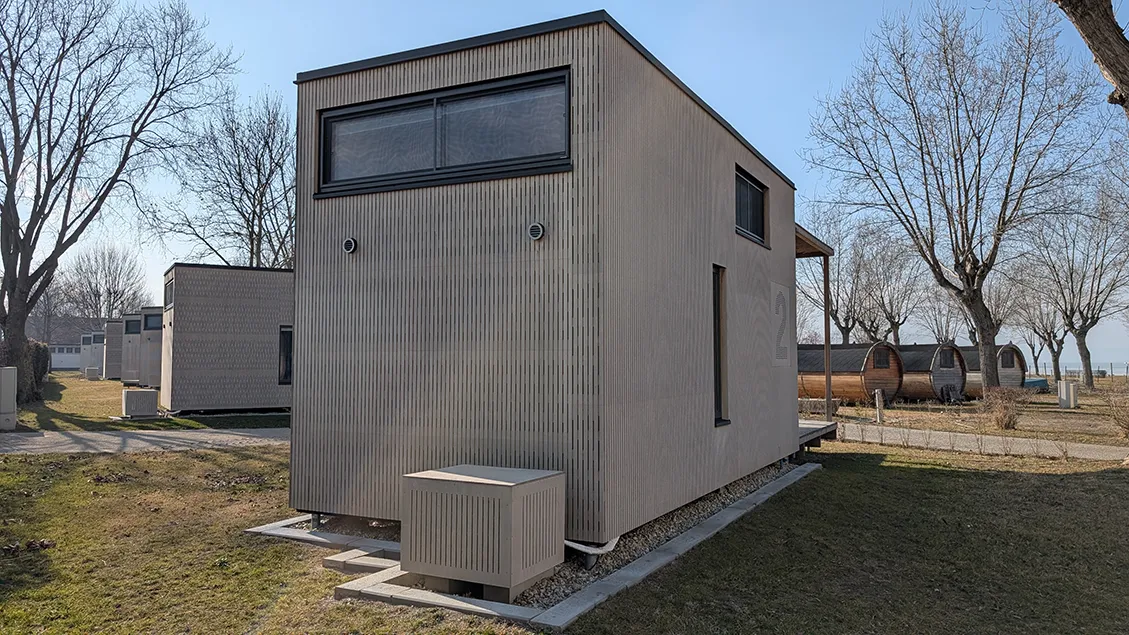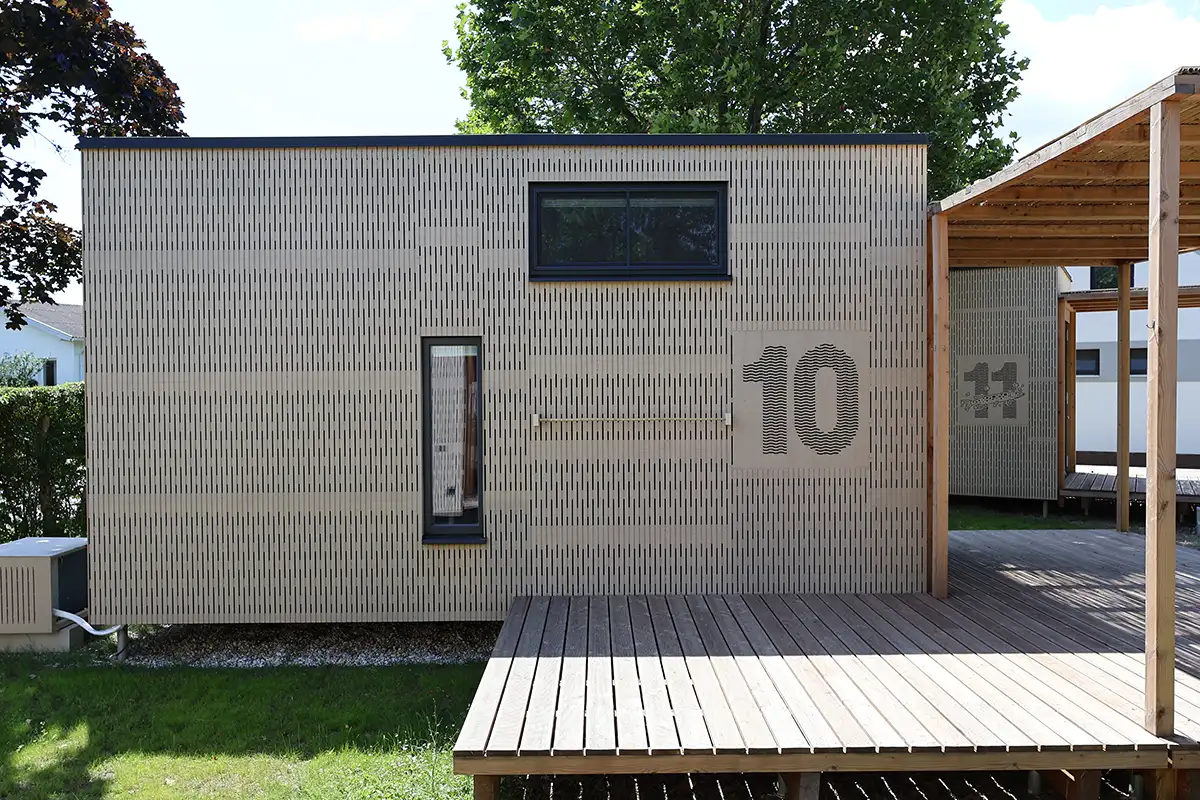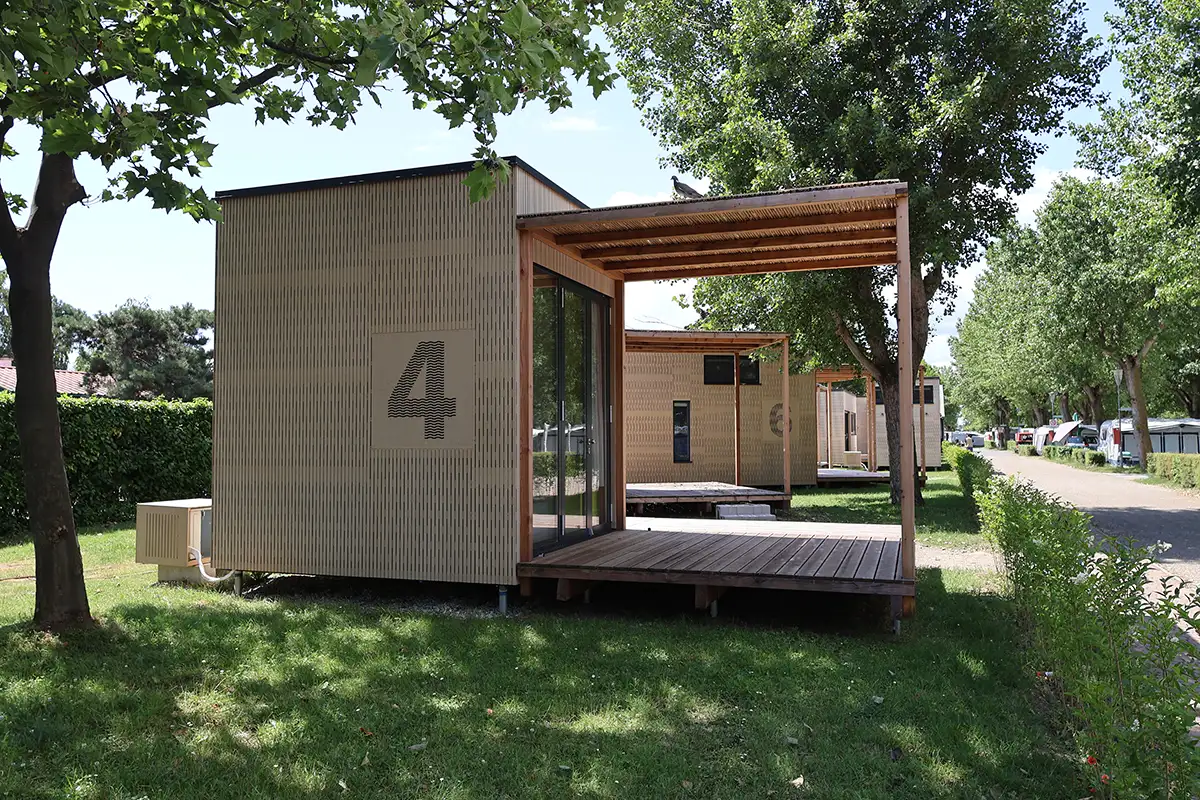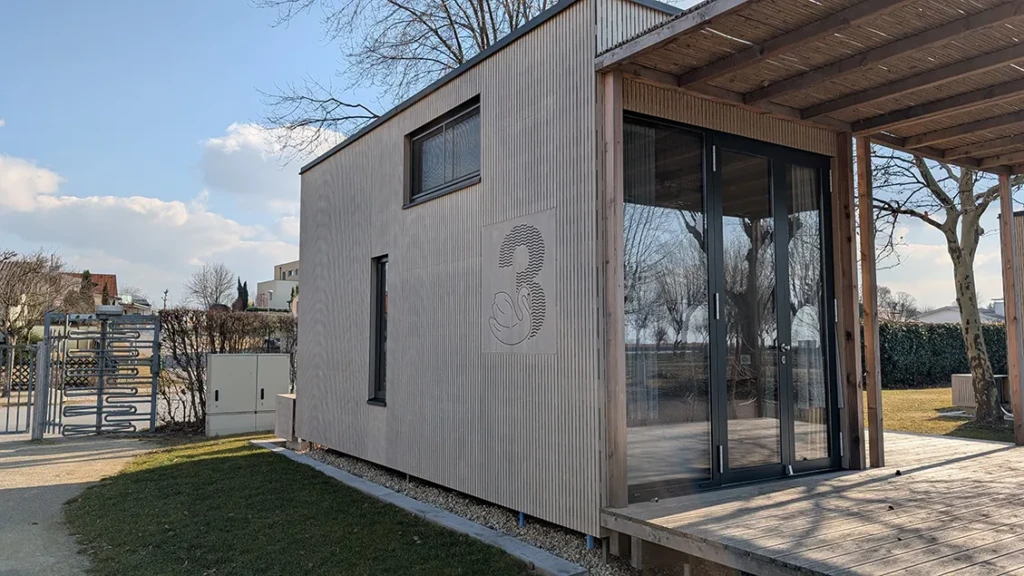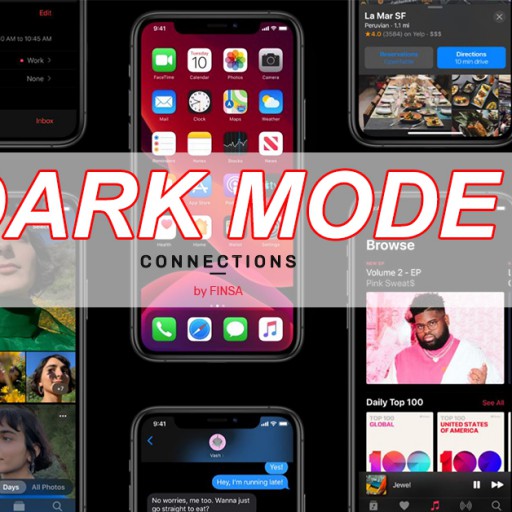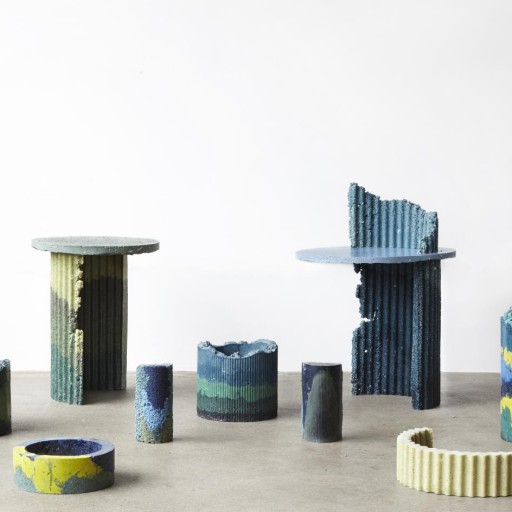Tiny House project developed by the Austrian studio DataB, founded by David Dabic, embodies a new way of conceiving contemporary residential architecture: compact, digitalized and deeply sustainable. This minimal home is the result of a process that combines computational design, automated production and conscious choice of materials, all under the File to Factory philosophy, the backbone of DataB’s practice.
Natural materials, digital design
One of the project’s most distinctive elements is its façade, made of Tricoya, a material derived from acetylated wood that stands out for its resistance to moisture, durability, and dimensional stability. “We needed a product that would allow us to perform complex milling and geometric shapes without compromising long-term performance”, Dabic explains. Tricoya also fits in with their digital design approach, allowing for the creation of a visually powerful and functional envelope.
The construction of the Minicasa was developed through a highly digitalized workflow: from design conception to manufacturing using CNC machines. This millimetre-level precision was essential to achieving the required levels of prefabrication and ensuring that each component of the wood assembly system fits together perfectly.
The most important challenge, according to Dabic, was quickly scaling this process to mass production, something uncommon for a tech startup in the sector. “We wanted to demonstrate that technology can be a true enabler of more efficient processes, and in this project, we achieved that in spades,” he notes.
Tiny houses, a booming phenomenon
Although the concept of tiny houses still faces regulatory challenges in Austria —particularly regarding permits and infrastructure connections—its popularity is growing, driven by interest in more sustainable and minimalist lifestyles. For Dabic, these homes offer real solutions to current problems such as the lack of affordable housing or the need for greater residential flexibility.
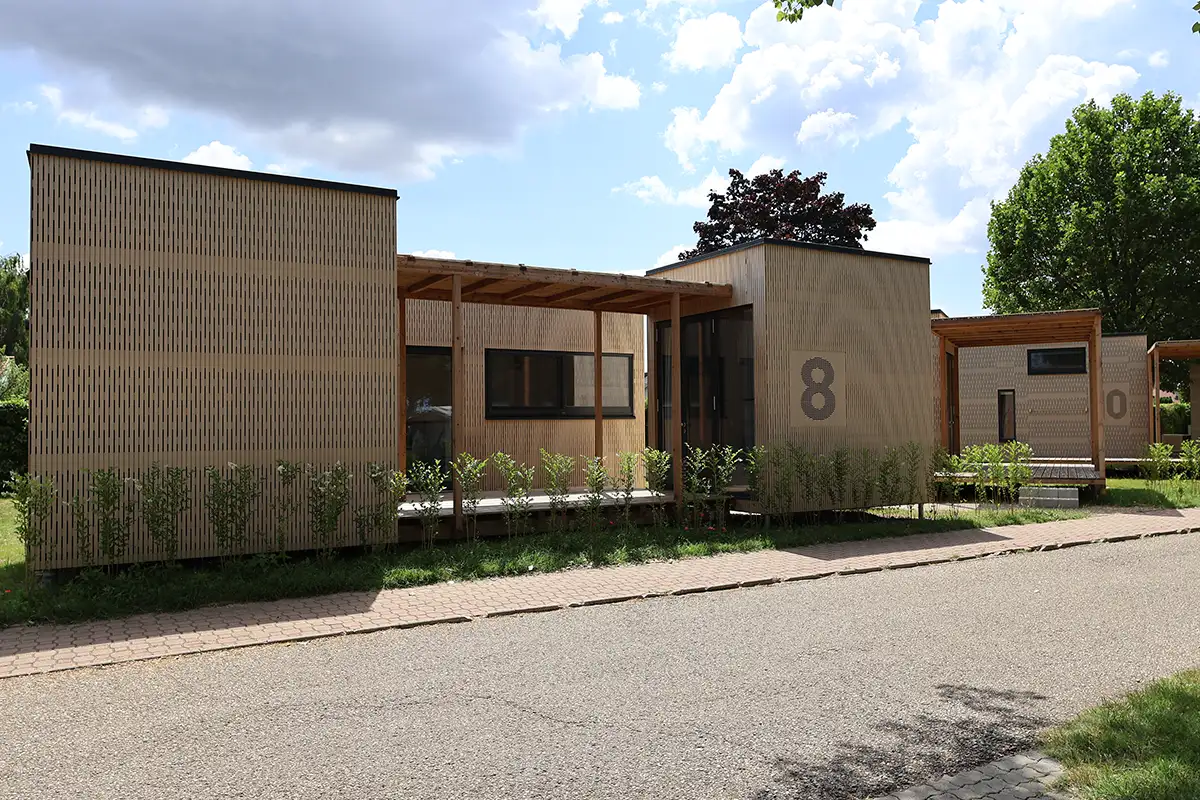
The potential of digitalization of architecture
This project not only represents innovative microarchitecture, but a statement about the potential of digitalization in construction. For DataB, the future of the sector lies in integrating traditional knowledge with digital tools, which represents “a great opportunity to connect agents from different fields and sizes“. Digitalization, he argues, “allows companies to integrate expertise beyond their own organizational boundaries, opening up new potential for collaboration and growth, thus expanding the boundaries of what’s possible in architecture”.